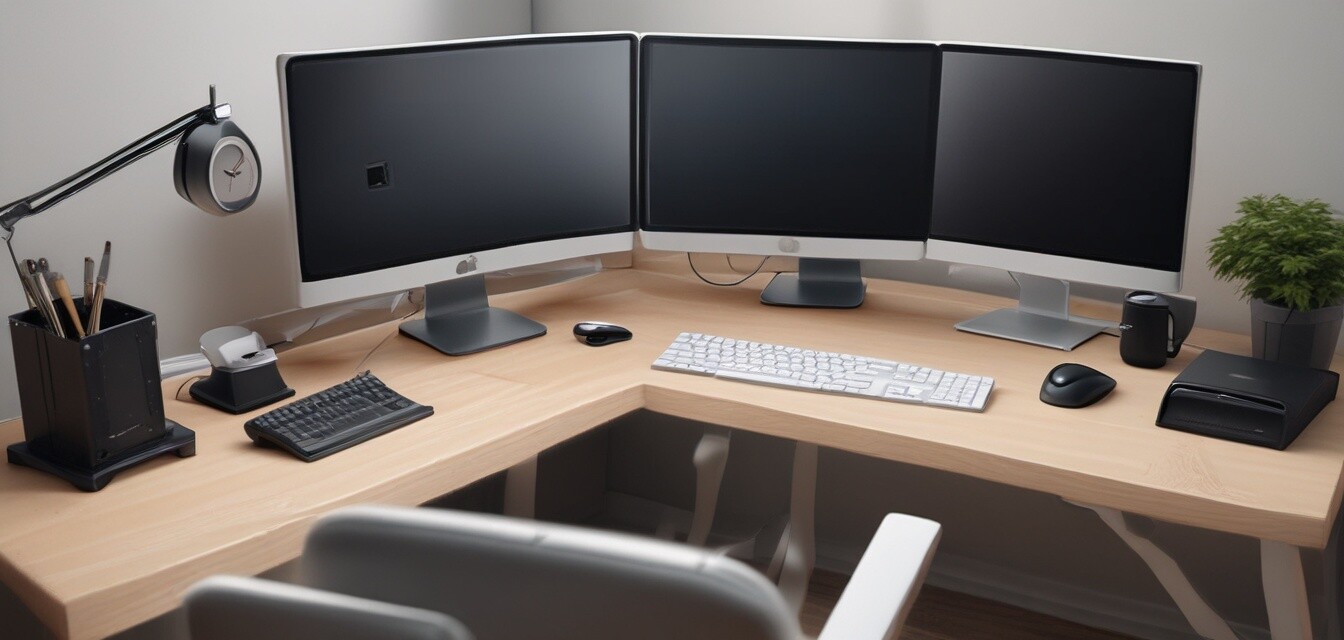
Top Essentials for a Productive Home Office Setup
- Invest in ergonomic furniture for comfort and support.
- Use multi-monitor setups to enhance productivity.
- Utilize docking stations for efficient device connectivity.
- Ensure robust networking solutions for seamless internet access.
- Incorporate audio equipment for effective communication.
Having a productive home office setup is crucial for anyone working remotely. With the right tools and equipment, you can significantly enhance your efficiency and comfort during working hours. Below, we will identify the essential items you need to create an ideal home office environment that promotes productivity.
1. Ergonomic Accessories
Investing in ergonomic accessories can play a significant role in maintaining your comfort and reducing strain during long work hours. Here are a few key items:
- Ergonomic Chair: Supports your posture and reduces back pain.
- Keyboard and Mouse: Look for options that are designed for comfort.
- Standing Desk: Provides flexibility to alternate between sitting and standing.
2. Multi-Monitor Setups
Setting up multiple monitors can greatly enhance your workspace, allowing you to multitask more efficiently. Here's what to consider:
- Monitor Placement: Ensure your monitors are at eye level for better ergonomics.
- Screen Resolution: Choose monitors with high resolutions for crisp visuals.
- Monitor Stands: Use stands to free up desk space and optimize ergonomics.
Comparison of Monitor Setup Options
| Setup Type | Advantages | Disadvantages |
|---|---|---|
| Dual Monitors | Enhanced multitasking; more screen real estate. | Requires more desk space. |
| Triple Monitors | Exceptional productivity; great for complex tasks. | Can be overwhelming; need for strong graphics support. |
| Single Ultra-wide Monitor | Space-efficient; seamless display. | Lack of flexibility in viewing angles. |
3. Docking Stations
A good quality docking station can simplify your workspace by providing USB hubs and additional ports. Look for these features:
- Multiple Ports: USB-A, USB-C, HDMI, and Ethernet for connectivity.
- Power Delivery: Ability to charge your laptop while connecting devices.
- Compact Design: Space-saving solutions are preferred.
Benefits of Using a Docking Station
A docking station can greatly reduce clutter, allowing for one connection to your laptop instead of multiple cables. You can connect all your devices quickly without needing to fumble around with each cord.
4. Networking Solutions
A reliable network connection is crucial for a productive home office setup. Consider the following:
- Router Quality: Invest in a high-quality router to ensure stable and fast internet speeds.
- Wi-Fi Extenders: Use extenders if your office is far from the router.
- Ethernet vs. Wi-Fi: Use Ethernet for a more stable connection, especially for video conferencing.
Understanding Your Network Needs
Assess your internet usage to determine your network demands. If you mainly handle emails and video calls, a good router should suffice. However, if you're engaging in high-bandwidth activities, consider upgrading your network setup.
5. Audio Equipment
Good audio equipment is essential for clear communication. Here are some items to consider:
- Headset: Look for options with noise cancellation for clear sound.
- Microphone: A quality mic enhances communication during calls.
- Speaker System: Invest in good speakers if you’re in meetings or webinars.
Pros
- Enhanced comfort leads to increased productivity.
- Multi-monitor setups maximize efficiency.
- Docks simplify device management and connectivity.
- Reliable network enhances communication and workflow.
- Quality audio equipment supports clearer interactions.
Cons
- Initial investment costs can be high.
- Requires sufficient desk space for multiple devices.
- Not all equipment is user-friendly for beginners.
Final Thoughts
In conclusion, creating a productive home office setup involves investing in the right equipment that maximizes comfort and efficiency. By incorporating ergonomic accessories, a multi-monitor setup, a reliable docking station, robust networking solutions, and quality audio equipment, you can transform your workspace into an environment conducive to productivity.
For more tips on enhancing your home office, check out our sections on buying guides and visit our product categories on computer peripherals and audio equipment.